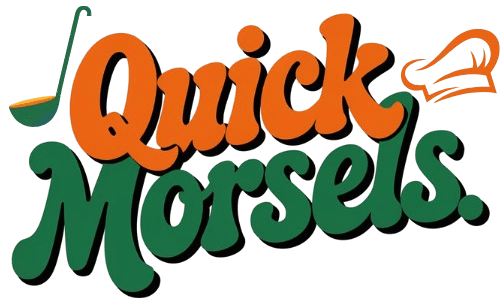Why Use Sourdough Discard?
You know that little jar in the fridge labeled “sourdough starter”? The one you feed, fuss over, and occasionally forget? Here’s the truth: sourdough discard recipes aren’t just a way to reduce waste — they’re a creative invitation to rethink baking altogether.
Let’s be honest. Most of us felt a little guilty tossing that tangy, floury goop after each feeding. I remember scraping it into the trash and thinking, “There has to be a better use for this.” Turns out, there is — dozens of them, actually.
Sourdough discard isn’t some second-rate byproduct. It’s alive with flavor, complexity, and possibility. That subtle sour tang can transform pancakes into something with real depth, crackers into a snacking obsession, and pizza crust into a weekend ritual you’ll want to brag about.
This guide exists for one big reason: to help you use every bit of your starter. No waste. No guilt. Just good food with layered, living flavor. We’ll go way beyond bread (though, yes, there’s pizza crust in here) and look at breakfast treats, savory snacks, hearty mains, and sweet desserts — all with discard as the secret star.
BTW, if you’re not sure about storing discard, worried it’s “too old,” or wondering how to sub it in your favorite recipe? We’ll get to all that. You might even discover you want to keep extra starter on hand just to have more discard to play with.
In the end, it’s not just about reducing food waste (though that’s a worthy goal on its own). It’s about reclaiming something overlooked and giving it purpose. That’s pretty satisfying — in the oven, and in life.
What Is Sourdough Discard?
If you’re new to sourdough baking (or even if you’re just fuzzy on the details), you might be wondering: What exactly is sourdough discard?
Let’s clear this up. Sourdough discard is the portion of your sourdough starter that you remove before feeding. Think of it as pruning a plant — you cut back the old growth to keep the starter healthy and manageable.
It’s not bad or spoiled. Far from it. Discard still contains active wild yeast and beneficial bacteria, but in lower concentrations than freshly fed starter. That tangy, fermented character is what gives sourdough recipes their signature depth.
Actually, let’s be a little more honest. Discard is kind of the unloved middle child of baking. We feed our starter like it’s a pet, bake beautiful loaves, but then scrape the leftovers into the trash without a second thought. But here’s the thing: that “trash” is full of flavor. It’s a living ingredient that wants another chance.
How Does Sourdough Discard Work in Recipes?
Because discard has already undergone fermentation, it brings unique properties to your cooking:
- Flavor Boost: Adds that mild, complex sourness you can’t fake.
- Leavening Help: Offers a little rise, though usually needs support from baking powder or soda.
- Nutritional Perks: Predigested starches make grains easier to digest.
In recipes, you’ll often use it as a wet ingredient — swapping part of the flour and liquid. It can also enrich doughs and batters even without fully leavening them. That makes it incredibly versatile: from pancakes to crackers to cake.
FAQ: Can I Use Old Sourdough Discard?
Q: How old is too old for sourdough discard?
A: Good question — and one bakers argue about! Generally, if it’s been refrigerated and smells pleasantly sour (but not putrid or off), it’s fine for weeks. Some bakers even prefer the stronger tang of aged discard. If there’s mold, pink streaks, or a rotten smell? Toss it immediately.
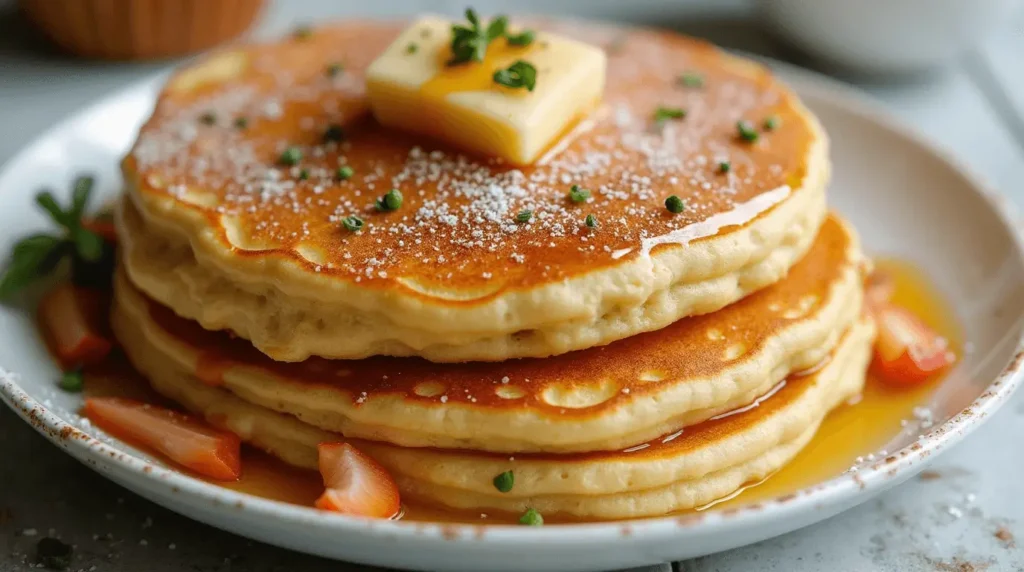
Benefits of Using Sourdough Discard
I’ll be straight with you: for the longest time, I didn’t get why anyone would bother saving sourdough discard. It seemed…kind of gross. Grayish. Sour-smelling. I’d scrape it out of the jar with this guilty little shrug and dump it right in the trash.
But over time, I started seeing it differently. Not because I suddenly turned into some zero-waste saint, but because I actually tasted what it could do.
It’s funny how something you thought was worthless can end up being the best part of a meal. Those pancakes with a tiny edge of tang? The crackers that people can’t stop eating because they have this depth that store-bought versions just can’t pull off? That’s discard doing its quiet work.
And sure, there’s the environmental angle. If you’re baking regularly, you end up throwing out so much flour-water mixture. It adds up. But honestly? For me, the motivation wasn’t just “saving the planet” — it was the sheer satisfaction of not wasting something I put time into. Flour isn’t cheap these days, either.
There’s also this idea that discard makes your baking easier to digest. The fermentation breaks down some of the starches and gluten. I’m not going to claim it turns cake into a health food — let’s not kid ourselves — but there’s a real difference you can feel if you pay attention.
Most of all? Using discard invites you to experiment. It forces you, in a good way, to think creatively: “What can I turn this into?” I’ve messed up plenty of times trying new variations — underbaked muffins, too-sour pizza crust. But those little failures are part of the fun.
I guess that’s the real benefit. It’s not just about reducing waste or improving flavor. It’s about being the kind of cook who sees potential in what other people throw away. And maybe, just maybe, finding a bit of creative freedom in that.
Essential Tips for Baking with Sourdough Discard
Let’s not pretend this is always foolproof. Working with sourdough discard can feel like you’re handling a moody, half-feral pet. Sometimes it behaves beautifully. Other times? Not so much.
One of the first things I learned — the hard way — was that you can’t just chuck discard into any recipe and expect miracles. The acidity changes things. The hydration matters. I remember making a batch of muffins that were so dense they could have doubled as paperweights. Not my proudest moment.
If you want to avoid that kind of heartbreak, there are a few things to keep in mind — and no, this isn’t some rigid rulebook. More like hard-earned advice I wish someone had given me.
First, store it right. Discard can hang out in the fridge for weeks if it’s kept sealed. It’s not immortal, though — if it starts growing pink streaks or smells like a science experiment gone wrong, toss it. I’ve been guilty of ignoring those warning signs because I hate wasting food, but trust me, there are limits.
Second, adjust your recipe. Discard is wet. It’s also slightly acidic. That means you’ll probably need to tweak flour and liquid ratios if you’re subbing it in. And you might want to add baking soda to neutralize some of that acidity if you’re going for sweet bakes. Or embrace the tang — your call.
Third, be patient with fermentation. Even though discard has yeast, it’s weaker than a fed starter. If you want real rise, you’ll usually need help from commercial yeast or chemical leaveners. Otherwise you’ll end up with what I lovingly call “bread bricks.”
Lastly? Experiment without fear. I mean it. Write down what works and what doesn’t. I have a ratty old notebook full of disasters and surprise hits. That’s the real secret. It’s not about following someone else’s perfect recipe. It’s about learning how your discard behaves in your kitchen.
Honestly, there’s something kind of liberating about that. Messy, sure. Unpredictable. But also a chance to make something truly your own.
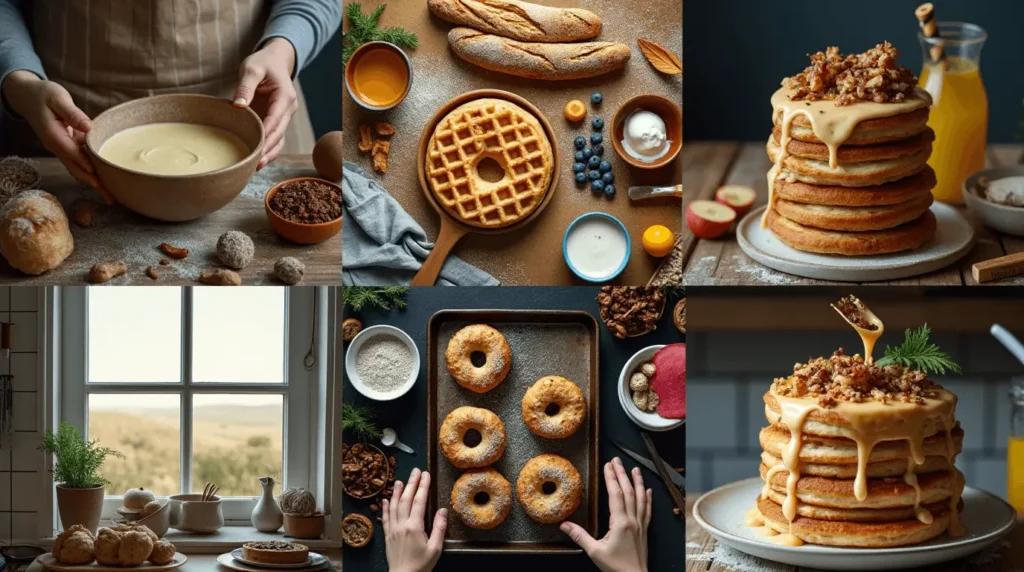
Breakfast Recipes with Sourdough Discard
I’ll be honest — breakfast is where sourdough discard really shines. There’s just something about starting the day with that unmistakable tang. Not in-your-face sour like you might expect, but this mellow, layered flavor that turns ordinary breakfasts into something you actually look forward to.
I didn’t always get it. The first time I tried using discard in pancakes, I was convinced I’d ruined them. The batter smelled weird, almost too sharp. But they cooked up light and fluffy, with this subtle acidity that balanced the syrup perfectly. It was the kind of “wait, what is this?” moment that made me fall in love with discard baking in the first place.
If you want to try it yourself, here’s my not-so-formal guide.
Sourdough Discard Pancakes
No, you don’t need a culinary degree. Just remember: discard is wet and sour, so you’ll need to adjust things a bit.
Rough method (because that’s how I cook):
- About 1 cup sourdough discard
- 1 egg
- Splash of milk (enough to thin to pancake batter consistency)
- 1 tbsp sugar or honey (optional)
- 1 tsp baking soda (this reacts with the acidity for fluffiness)
- Pinch of salt
Mix it all up — the baking soda will foam a little (I still love watching that). Pour onto a hot, buttered skillet. Cook until bubbles form, flip, finish. Done.
They’re tangy, airy, and just different enough to feel special.
Sourdough Discard Waffles
Honestly? Same idea, slightly thicker batter. You can add a bit of melted butter or oil to enrich it. Waffle irons love discard — you get those crispy edges and soft insides with the faintest sour note.
I make these on lazy weekends when I’m pretending to be the sort of person who plans brunch.
Sourdough Muffins with Discard
Muffins were my problem child. The trick is not overdoing the discard. Too much and you get bricks. I usually replace about 1/3 of the liquid in a regular muffin recipe with discard. Banana muffins love this — the acidity actually wakes up the sweetness.
I won’t lie and say every batch has been a masterpiece. Some were oddly dense, others needed more sugar. But that’s the fun — you get to tweak, taste, and make it your own.
FAQ: Can Kids Eat Sourdough Discard Recipes?
Q: Is sourdough discard safe for kids?
A: Absolutely. It’s just flour and water that’s been fermented. The tang is mild in most baked goods. In fact, pancakes and muffins with discard can be a fun way to introduce kids to slightly more complex flavors — and they probably won’t even notice the difference.
Snacks & Appetizers Using Sourdough Discard
You ever have those afternoons where you just need a snack? Not a sad granola bar you forgot at the bottom of your bag, but something real — something you made? That’s where sourdough discard comes in.
It’s funny. I used to think of discard as purely a bread thing. But then one day, I tried making crackers with it — and it felt like cheating. They were so good. Ridiculously easy, too. It almost made me mad I hadn’t tried it sooner.
Sourdough Discard Crackers
Let’s be real — there’s no single “correct” cracker recipe. I change it almost every time. Here’s the gist of what I do:
- 1 cup discard (cold from the fridge works fine)
- 2–3 tbsp olive oil
- Pinch of salt
- Herbs or spices (I’m partial to rosemary, garlic powder, or even za’atar)
Mix it into a spreadable paste. Smear it thin — really thin — on parchment. Score if you want tidy squares, or just embrace chaos. Bake around 325–350°F until golden and crispy.
They’re addictive. Like, you-swear-you’ll-only-have-a-few-but-suddenly-the-pan’s-empty addictive.
What’s wild is you can get creative with flavors: sesame seeds, chili flakes, grated Parmesan. I once threw in a handful of chopped rosemary and black pepper, and I don’t think I even shared them.
Pizza Rolls & Pinwheels
This was a “happy accident” sort of discovery. I had leftover pizza dough (enriched with discard) and extra tomato sauce. Rolled it out, spread sauce, sprinkled cheese, rolled it up like cinnamon rolls, sliced, baked. Instant party snack.
They’re messy, imperfect, and honestly better for it. My friends think I’m some genius cook when I bring them out, which is hilarious because it’s literally “leftovers plus discard.”
Creative Dips & Spreads
Okay, this one’s less about baking with discard and more about pairing. Those crackers? They deserve better than store-bought hummus. I like whipping up simple dips: roasted red pepper and feta, creamy herbed yogurt, even classic guac.
And here’s the thing — the mild tang of discard crackers actually makes dips pop more. It’s like they’re designed to go together.
FAQ: Do I Need to Feed My Starter Before Using Discard?
Q: Can I use unfed, old discard for these snacks?
A: 100%. In fact, unfed discard works great in crackers and savory snacks. It has all the flavor without the need to rise. Just make sure it’s not moldy or rotten — a pleasant sour smell is perfect.
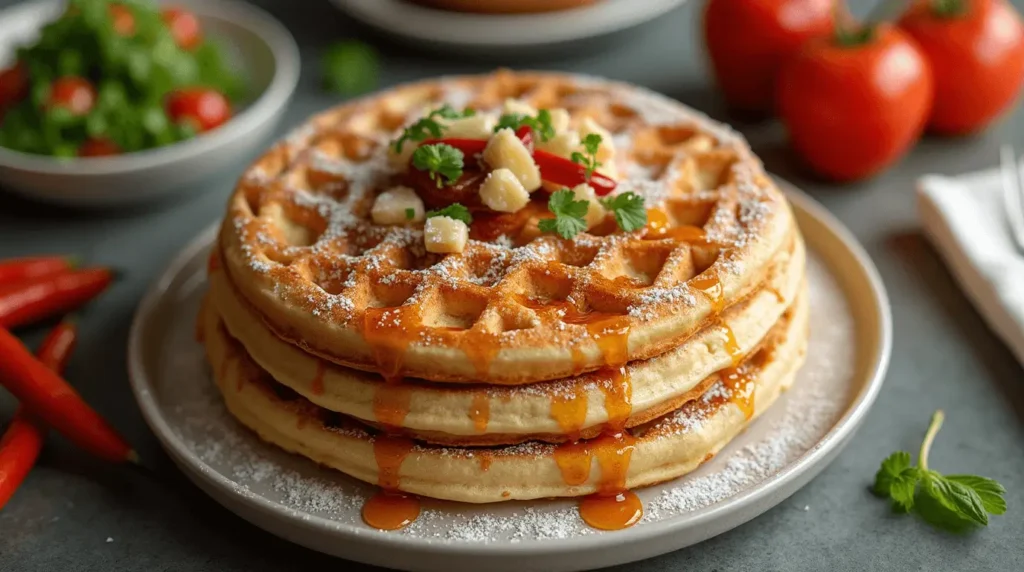
Main Dishes Featuring Sourdough Starter
If you’re anything like me, you probably thought sourdough was strictly a baking thing. Bread. Pancakes. Maybe crackers if you’re feeling fancy. But actual main courses? That took me longer to wrap my head around.
But here’s the thing — discard has this almost magical ability to deepen flavors in savory dishes. It’s like a secret handshake between your starter and your dinner.
Homemade Sourdough Pizza Crust
I resisted making my own pizza crust for ages. Seemed fussy. But then I tried folding discard into my regular dough. Game-changer.
Here’s how I usually do it (emphasis on usually, because I’m not consistent):
- About 1 cup active discard (unfed works, too, but fed has more oomph)
- 2–3 cups flour (I swap in whole wheat sometimes)
- 1 tsp salt
- 1 tbsp olive oil
- Enough water to get a soft, slightly sticky dough
Mix, knead gently (or not too much if you’re lazy like me), let it rest for at least an hour — longer is better. The sourdough tang is subtle but so, so good. It’s chewy, with that hint of sour that plays perfectly with tomato sauce and melty cheese.
Honestly? Even mediocre toppings taste better on it.
Hearty Skillet Meals
This one’s more improvisational — no fancy recipe card here.
Picture this: leftover chicken or veggies sautéed in a big skillet. Stir in a few spoonfuls of discard with a splash of broth or cream to thicken the sauce. It gives it this unexpected richness — almost like you deglazed with wine but forgot to open the bottle.
I know it sounds weird. I thought so too. But once you try it, you’ll see. The discard’s acidity balances out heavier flavors and adds a layered, homemade vibe that feels intentional, even if you’re cleaning out the fridge.
Pasta Sauces with a Sourdough Boost
I wasn’t sold on this one at first. Adding discard to sauce? Isn’t that…gross?
Turns out, no. Stirring a few spoonfuls of discard into a tomato sauce mellows the acidity and thickens it beautifully. For cream sauces, it brings a tangy complexity that makes them less cloying.
Just go easy. A little goes a long way.
I’ve even mixed discard into ricotta fillings for stuffed shells or lasagna — it gives them a farmhouse sort of vibe that feels rustic in the best way.
FAQ: Can I Use Sourdough Discard as a Thickener?
Q: Is it safe to use discard in sauces?
A: Absolutely. It acts as both a mild thickener and flavor enhancer. Just remember it’s fermented — so if it’s too old (foul-smelling, moldy, pink), toss it. Otherwise, it’s fair game and adds beautiful depth to savory dishes.
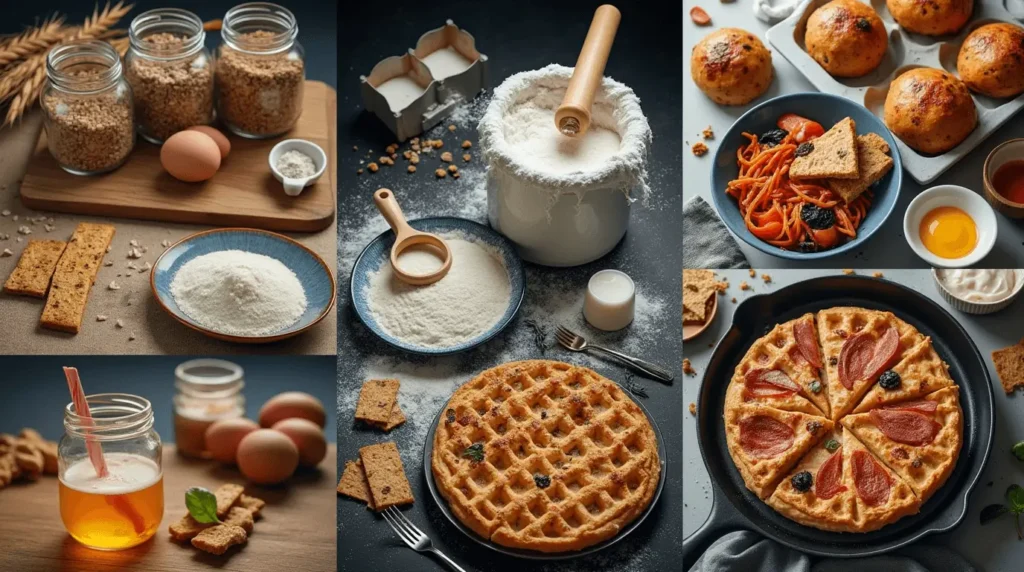
Sweet Treats and Desserts with Sourdough
Look, I’ll admit something: the first time someone told me you could make desserts with sourdough discard, I kind of scrunched up my nose. Discard? That sour, tangy, questionably gray goop in a jar? In cake? No thanks.
But it turns out I was completely wrong. Or maybe half wrong. Because when you get it right, sourdough discard gives desserts this incredibly subtle complexity that makes you wonder why you ever baked without it.
It’s not “sour” like lemon juice. It’s… layered. Mellow. The kind of tang that keeps sweet things from being cloying.
Quick Breads with Sourdough Discard
Banana bread is the classic here. I fought it at first because my old recipe felt sacred. But swapping in discard for about a third of the liquid? Total game-changer.
It didn’t make it taste sour — it made it taste grown-up. Like the difference between cheap candy and good chocolate.
And it’s not just banana. I’ve used it in chocolate chip, pumpkin, even zucchini bread. Each time I expect it to fail, and each time I’m pleasantly surprised.
If you’re worried, start with just a few tablespoons of discard. You can always add more next time when you realize how good it is.
Cakes with a Tangy Twist
Cakes are trickier — I’ll be upfront. You need to account for the acidity so it doesn’t throw off your rise. Baking soda is your friend.
I’ve had successes and failures here. One carrot cake was so dense I joked it could stop a bullet. But other times? Perfectly moist crumb with a whisper of tang that made the frosting pop even more.
It’s a risk. But also kind of thrilling. You’re not just following a recipe — you’re experimenting. That’s the fun of discard baking.
Cookies? Why Not.
Okay, this one is more controversial. Some people swear by adding discard to cookie dough to get chewier centers and a faint sour edge. I’ve tried it. Once they were great. Another time? Kinda weird.
I think it depends on the recipe, and maybe your taste buds. If you’re adventurous, give it a shot. Just know I won’t take the blame if your kids look at you funny.
FAQ: Will Desserts Taste Too Sour?
Q: If I use sourdough discard in sweets, will everything taste sour?
A: Not if you balance it right. Think of it like buttermilk in pancakes — a mild acidity that enhances rather than dominates. Start small, adjust to taste, and don’t be afraid to tweak.
Creative Flavor Combos & Variations
If you’re anything like me, you might have started with just one or two “safe” discard recipes — pancakes, maybe crackers. And then you thought, Wait, what else can I do with this?
That’s where it gets really fun. And honestly? A little overwhelming. There are endless ways to flavor sourdough discard bakes. It’s not a science (though you can make it one if you’re that type of baker). It’s more like jazz.
I’ll admit, I’ve had a few truly awful experiments. Curry powder in sweet muffins? Never again. But I’ve also stumbled onto some combinations that felt borderline genius.
Here’s how I think about it now. Not as a strict recipe list, but a set of starting points.
Sweet Variations
- Cinnamon + brown sugar (classic, safe, always works)
- Orange zest + dark chocolate (trust me on this one)
- Cardamom + pistachio (for when you’re feeling fancy)
- Mashed banana + walnuts (a no-brainer)
The discard tang? It makes these sweeter flavors pop instead of being flat. I didn’t expect that.
Savory Twists
- Rosemary + cracked black pepper (for crackers or breadsticks)
- Garlic powder + Parmesan (because yes)
- Chili flakes + smoked paprika (a favorite for pizza dough)
- Sesame seeds + scallions (Asian-inspired vibes)
Honestly, these variations feel like they level up basic baking without much effort. You don’t need culinary school, just a willingness to play around and occasionally shrug when something flops.
Seasonal Inspiration
This is something I started doing after I got tired of making the same discard recipes over and over:
- Fall: pumpkin puree + warm spices
- Winter: candied ginger + cranberries
- Spring: lemon zest + poppy seeds
- Summer: fresh berries folded into muffin batter
Not every combo is a hit. I’ve ruined a few batches with too much wet fruit. But when it works? It feels so personal. Like something you couldn’t just buy in a store.
Why Bother with Variations?
Because discard baking isn’t just about not wasting. It’s about owning the process. Making something that feels like you.
Anyone can follow a recipe. But when you start riffing? That’s when you become a baker.
FAQ: How Do I Know if a Flavor Combo Will Work?
Q: I’m nervous — how can I tell if my idea is good?
A: There’s no perfect answer. Start with small batches. Think about balance — tangy discard works well with sweetness, rich spices, or savory umami. If it sounds gross? Maybe it is. Or maybe it’s brilliant. The only way to know is to try.
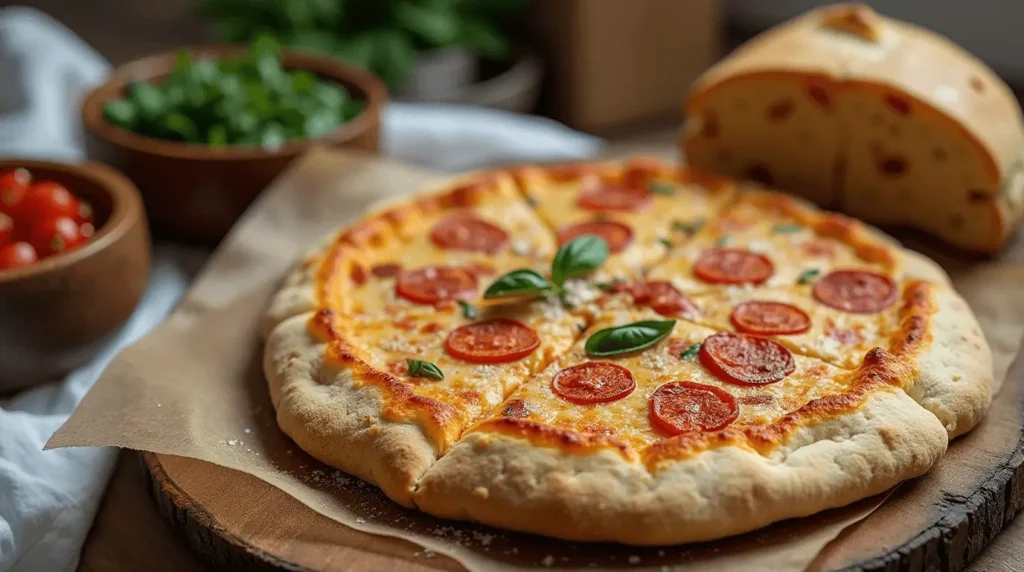
Sustainability & Cost Savings Tips
Let’s talk honestly for a second. When I first started baking sourdough, I didn’t really care about the “waste” part. I just wanted good bread. That’s it.
But every time I scraped discard into the trash, I got this tiny nagging voice in my head. You’re throwing away perfectly good food. At first I ignored it. Flour was cheap, right? Who cares.
Then flour wasn’t cheap anymore. I remember standing in the grocery aisle, watching prices creep up, thinking: Okay, maybe this matters after all.
That’s the real appeal of using sourdough discard. It’s not just eco-friendly virtue signaling. It’s practical.
Reducing Food Waste (Without Feeling Like a Martyr)
People like to talk about sustainability like it’s this giant sacrifice. But using discard is almost comically easy.
You’re already feeding your starter. You’re already tossing the extra. Why not just bake with it? Crackers, pancakes, pizza dough — it doesn’t have to be fancy.
If you bake regularly, you can save literal pounds of flour-water mix per month. I once did the math (badly, I’ll admit) and realized I’d thrown away about 10 pounds of potential food in a year.
That stung a little.
The Hidden Cost of Starter Maintenance
Here’s something most people don’t talk about: maintaining an active starter costs money.
- Flour
- Water
- Your time (feeding, cleaning jars, fighting off fruit flies — been there)
If you’re tossing discard, you’re literally paying to throw food away. That realization kind of embarrassed me.
But using it? That’s getting your money’s worth. It turns “overhead” into ingredients.
Freezer Management: Your New Best Friend
Look, I get it. You might not want to bake every time you feed your starter. I sure don’t.
That’s where the freezer saves you.
I keep a container in there and scrape in discard until I’m ready to use it. No schedule. No pressure. When the baking mood strikes, I have plenty on hand.
It’s not glamorous. It’s just practical. And weirdly satisfying.
Emotional Payoff
This might sound cheesy, but there’s something grounding about using what you have.
It makes baking feel less disposable, more mindful. Instead of treating discard like trash, you’re treating it like an ingredient with potential.
And maybe — just maybe — it makes you appreciate that humble loaf of bread a little more.
FAQ: Is It Really Worth the Effort to Save Discard?
Q: Is it actually worth the hassle to save and use sourdough discard?
A: Honestly? That’s up to you. For me, it’s a small, easy way to reduce waste and get more out of what I buy. If you’re baking anyway, why not make it count? And if it saves a few bucks and keeps good food out of the trash? That’s a win.
Frequently Asked Questions (FAQ)
I get it — even if you’re excited about using sourdough discard, there are still those lingering doubts. I had all of these questions at some point, usually while staring at a mason jar in the fridge and wondering if it was trying to kill me.
So let’s just lay them out, no shame.
Can I freeze sourdough discard?
A: Yep. Absolutely. I do it all the time. In fact, it’s my safety net for those weeks I can’t be bothered to bake. Just scrape your discard into a freezer-safe container. It’ll firm up but won’t lose that signature tang.
When you’re ready to use it, thaw in the fridge or on the counter. Stir it up — it might separate a little (don’t panic). It’s still perfectly usable in most recipes.
How long can I store sourdough discard in the fridge?
A: This is one of those “it depends” answers, so bear with me.
Generally? A couple of weeks is fine. I’ve used discard older than that — if it smelled pleasantly sour but not rotten, it worked. But if you see pink streaks, fuzzy mold, or it smells like death? Don’t be a hero. Toss it.
If you’re squeamish, just feed it more often or keep smaller amounts. No judgment.
Is sourdough discard safe to eat?
A: Short answer: Yes.
It’s just flour and water that’s been fermented. That fermentation is actually why it’s so flavorful — and easier on your gut.
Of course, it’s not “immortal.” Good discard smells sour in that bakery way, not foul. If in doubt? I err on the side of caution and compost it.
Do I need to feed my starter before using discard?
A: Nope. That’s kind of the point. Discard is the unfed portion you remove before feeding. It’s weaker for leavening, but that’s perfect for crackers, pancakes, muffins — recipes where you want flavor more than rise.
If you want more rise? Use freshly fed starter or add other leaveners. But for most discard bakes, unfed is fine.
Can I use discard in any recipe?
A: Ha. I wish.
The honest truth? Discard changes the hydration, acidity, and flavor of your dough or batter. You’ll usually need to tweak things — less liquid here, maybe a pinch of baking soda there.
It’s not plug-and-play. And that’s what makes it fun (or frustrating, depending on your mood).
I’ve had some glorious successes. I’ve also baked literal bricks. The secret is being willing to experiment — and not getting too precious about perfection.
Conclusion
If you’ve made it this far, you’re probably not someone who likes wasting food. Or maybe you’re just curious about what else that jar of sourdough starter can do besides bake bread.
Honestly? Same. That’s what got me started down this rabbit hole.
I didn’t plan to become the person who freezes leftover discard, experiments with weird cracker flavors, or lectures friends about the magic of fermentation. It just sort of happened once I realized there was something valuable in what I was tossing out.
Because at its core, this isn’t really about discard. It’s about looking at the ordinary — even the unwanted — and seeing possibility.
It’s about that feeling you get when you pull something from the oven and it’s better than you expected. When you cut into a pancake and realize the tang makes the syrup sing. When your friend asks, “What’s in these crackers?” and you get to say, “Oh, just my sourdough discard” like it’s the most normal thing in the world.
You don’t have to be an expert. You don’t need fancy equipment. You just need a willingness to try, maybe fail a little, and learn as you go.
And if along the way you save a bit of money, reduce waste, and make your food taste better? That’s not a bad deal.
So go ahead. Open the fridge. Take out that jar. See what you can turn it into.
I promise it’s more than just discard.
Within the “Homemade Sourdough Pizza Crust” subsection:
Honestly? Even mediocre toppings taste better on it. If you’re looking to level up further, I also love making focaccia — you can check out this sourdough focaccia recipe for another great way to use your starter.
